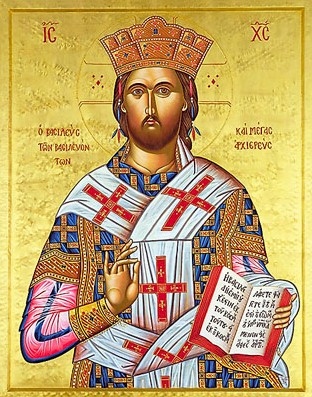Henri Nouwen is one of my favorite Christian authors, and his is a very fascinating life story. He was a missionary in Peru, had an illustrious career as an academic theologian, with stints at Notre Dame, Harvard Divinity School and Yale Divinity School, before giving that up to work at the l’Arche Daybreak Community in Toronto, a community for people with intellectual disabilities. There, he developed an interest in ancient Christian iconography, which culminated in this book.
Behold the Beauty of the Lord: Praying with Icons is a collection of four essays on four famous Russian icons: the Savior of Zvenigorod, Rublev’s Trinity, the Theotokos of Vladimir, and the Pentecost Icon, displayed in order below:
The book contains beautiful glossy removable pages of all four icons, and I think Nouwen intends for the reader to contemplate them while reading the corresponding chapter of the book.
Nouwen makes the point that what we receive into our lives visually is as important as what what we receive verbally, through reading or listening:
“But what do we really choose to see? It makes a great difference whether we see a flower or a snake, a gentle smile or menacing teeth, a dancing couple or a hostile crowd. We do have a choice. Just as we are responsible for what we eat, so we are responsible for what we see. It is easy to become a victim of the vast array of visual stimuli surrounding us. The ‘powers and principalities’ control many of our daily images. Posters, billboards, television, videocassettes, movies and store windows continuously assault our eyes and inscribe their images upon our memories…
For you who will read these meditations it is important to gaze at the icons with complete attention and to pray with them. Gazing is probably the best word to touch the core of Eastern spirituality. Whereas St. Benedict, who has set the tone for the spirituality of the West, calls us first of all to listen, the Byzantine fathers focus on gazing. This is especially evident in the liturgical life of the Eastern church.
Nouwen explains the features of the four icons in expert detail, and ties them into the devotional life of the praying Christian. He does not neglect the historical and liturgical contexts where these icons appear. Despite not being an Orthodox Christian himself, it is clear that Nouwen has taken the time to understand well the eastern Christian perspective on prayer and iconography.
This is a very worthwhile read, especially for the reader unfamiliar with the history and importance of iconography in the early church. For me, as one emerging from protestant traditions that have suppressed the visual aspect of Christian discipleship in favor of just reading and lecturing, it was incredibly helpful to learn how the Holy Spirit works in us visually. As goes one of the Orthodox communion hymns, oh taste and see how good the Lord is.






